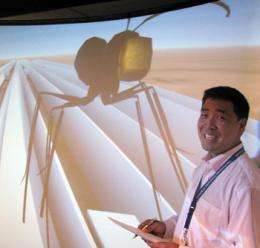(PhysOrg.com) -- It’s been said that a picture is worth a thousand words. But with advances in computer graphics capabilities, more recent cognitive theory related to multimedia learning suggests that very visually complex images could actually hinder learning.
That idea was put to the test recently by Macquarie University PhD student Iwan Kartiko. He decided to explore whether images of ants used in an educational virtual reality application could become so visually complex that they would ultimately hinder students learning, processing and retaining new material.
Kartiko devised a series of virtual reality simulations designed to teach second-year psychology students about the navigational capabilities of Cataglyphis ants.
“The students had no prior knowledge of the ants and how they navigate without landmark visual cues,” Kartiko said.
Students watched three types of progressively more complex ant-like animated virtual actors or AVAs, navigate on featureless on-screen terrain while listening to an audio explanation of how ants navigate. The ants were either flat, cartoon-like or closer to life-like in physical appearance.
Surprisingly, regardless of the level of detail and physical complexity of the ant AVAs, the results of the test showed no significant difference in how much of the information the students were able to retain and use to problem-solve.
Based on current theory, Kartiko had originally predicted their scores would be lower as the visual representations of the ants became progressively more complex.
For the next phase of his study, Kartiko plans to add richer background detail to the physical surroundings of the simulation to test what impact a more complex visual background environment has on learning. His results will ultimately be used to help develop the most effective online educational learning materials and content.
Provided by Macquarie University





















